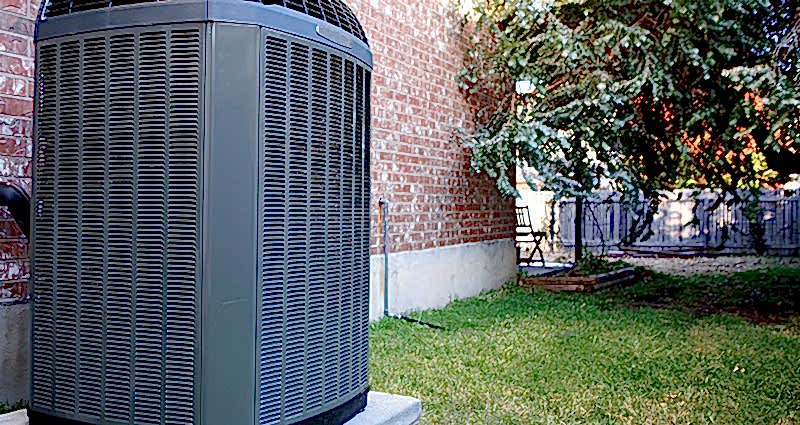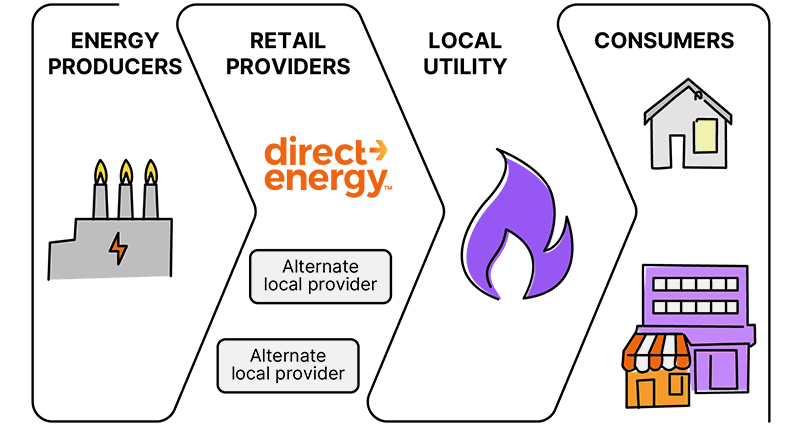Ohio electricity service
Ohio's electricity service is organized into 2 main branches.
- The PUCO oversees the Ohio utilities and retailers in the deregulated electricity market. They set rules for the Ohio electric distribution companies (the EDCs, also known as the old incumbent utilities) to transmit and distribute electricity to all of Ohio's energy customers fairly. PUCO also approves these utilities' for customers who do not actively choose a retail electricity supplier. PUCO also helps organize and oversee utility auctions that determine retail generation service rates in that utility's service zone.
- The Rural Electric Cooperatives (RECs). Ohio's Rural Electric Cooperatives are generally referred to as "unregulated utilities" because PUCO does not govern them. So, with a few exceptions, state statutes and rules governing Ohio utilities do not apply to these companies. There are 25 RECs serving rural residents across the state of Ohio.
To learn which electricity service is available in your area, check this interactive map that identifies REC and deregulated service zones, as well as the utility acting as the electric distribution company.
Ohio electric companies
Ohio's Electric Distribution Companies (EDCs, sometimes called "poles and wires" companies) are the original local utility companies. In recent times, these local Ohio utilities have been acquired by 4 national energy companies:
- Duke Energy
- American Electric Power (AEP): Operates as Ohio Power Company in 2 service zones: Columbus Southern Power and Ohio Power
- First Energy Companies: Ohio Edison, Toledo Edison and The Illuminating Company (Cleveland)
- AES: Also known as AES Ohio
Even though these utilities were required to sell off the generation and retail portion of their businesses, they are still required to distribute electricity to every customer in their service area, no matter who the Certified Retail Electric Suppliers (CRES) is.
These utilities are also responsible for providing Standard Service Offers (SSOs) to consumers in their area that do not have (or have not chosen) a retail electricity supplier. The SSO can either be an Electric Security Plan (ESP) in the form of a traditional rate plan or a market rate offer (MRO) that relies on a market-based pricing system. To maintain fairness to consumers, PUCO evaluates and approves each utility's SSO.
All customers, even those who use the local utility as their retail electricity supplier, must pay a distribution cost added onto their monthly bill.
Certified retail electricity suppliers
Customers can choose to buy energy from Certified Retail Electric Suppliers (CRES) instead of their local EDC. These retail electricity suppliers can be any of the following:
- One of the 4 original utility companies
- Marketers: Businesses that sell electricity service to individuals and businesses
- Brokers or aggregators: The contract with retailers on behalf of groups of buyers
- Government aggregators: County, municipal, or local community governments that contract with suppliers for service on behalf on their local communities
In the case where counties, townships, villages, and cities are permitted to set up aggregation supply agreements, residents still have the power to choose NOT to participate in the aggregation plan. Customers must file the "Electric Do Not Aggregate List" form with PUCO.
When choosing a certified retail electricity supplier in Ohio, remember to keep in mind an estimation of your monthly usage. You can do this by reviewing a few past billing statements for the past year. Consider, too, whether the CRES offers plans that work with your family's lifestyle as well as the length of time you plan to remain in your current residence.
The place to compare residential plan offers is PUCO's Apples to Apples Energy Choice website. PUCO also has a handy worksheet you can use for comparing different offers from certified retail electricity suppliers.
You can also find consumer service numbers, complaint procedures, tips on how to save water and energy, and other useful information about electricity choice in Ohio.




































